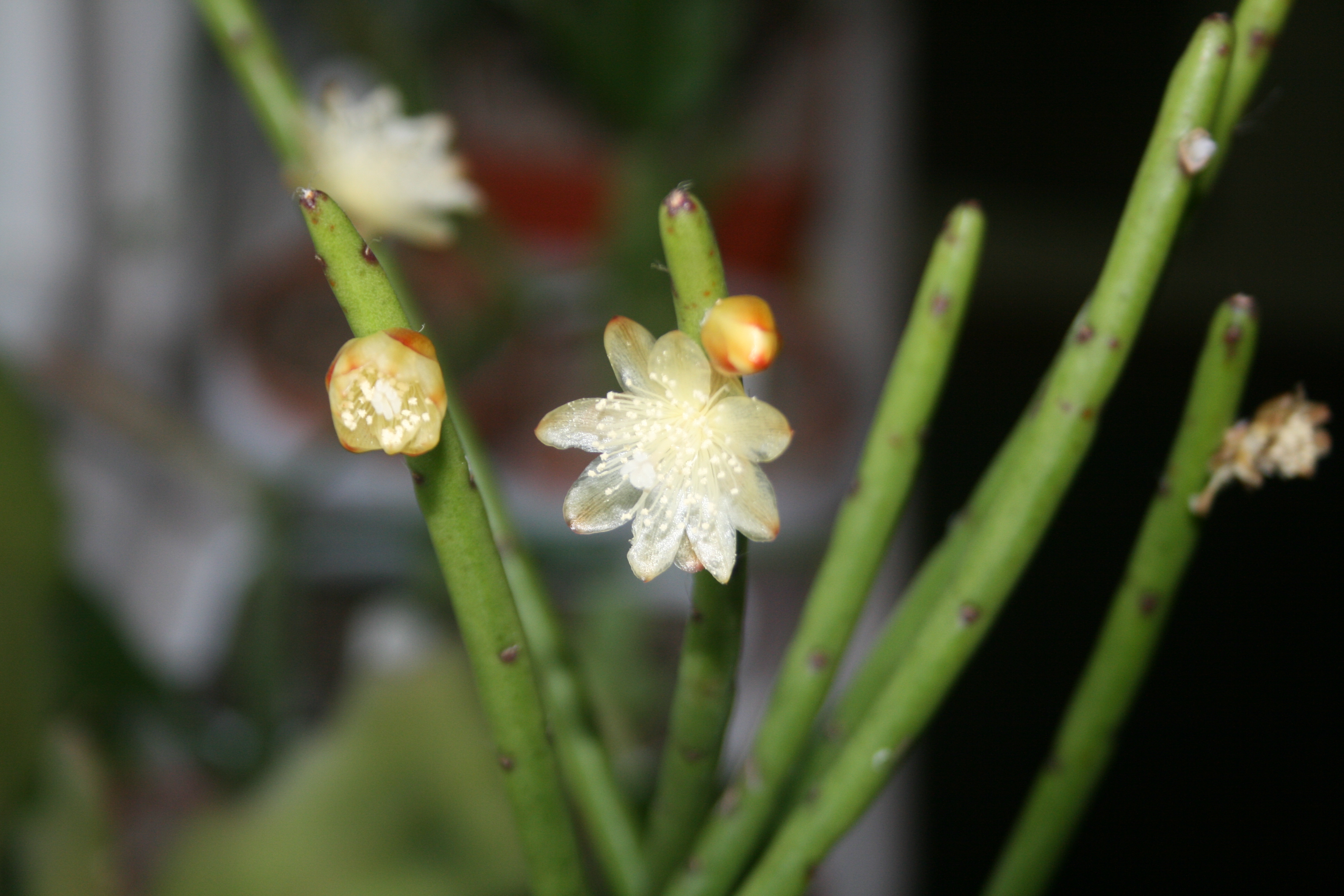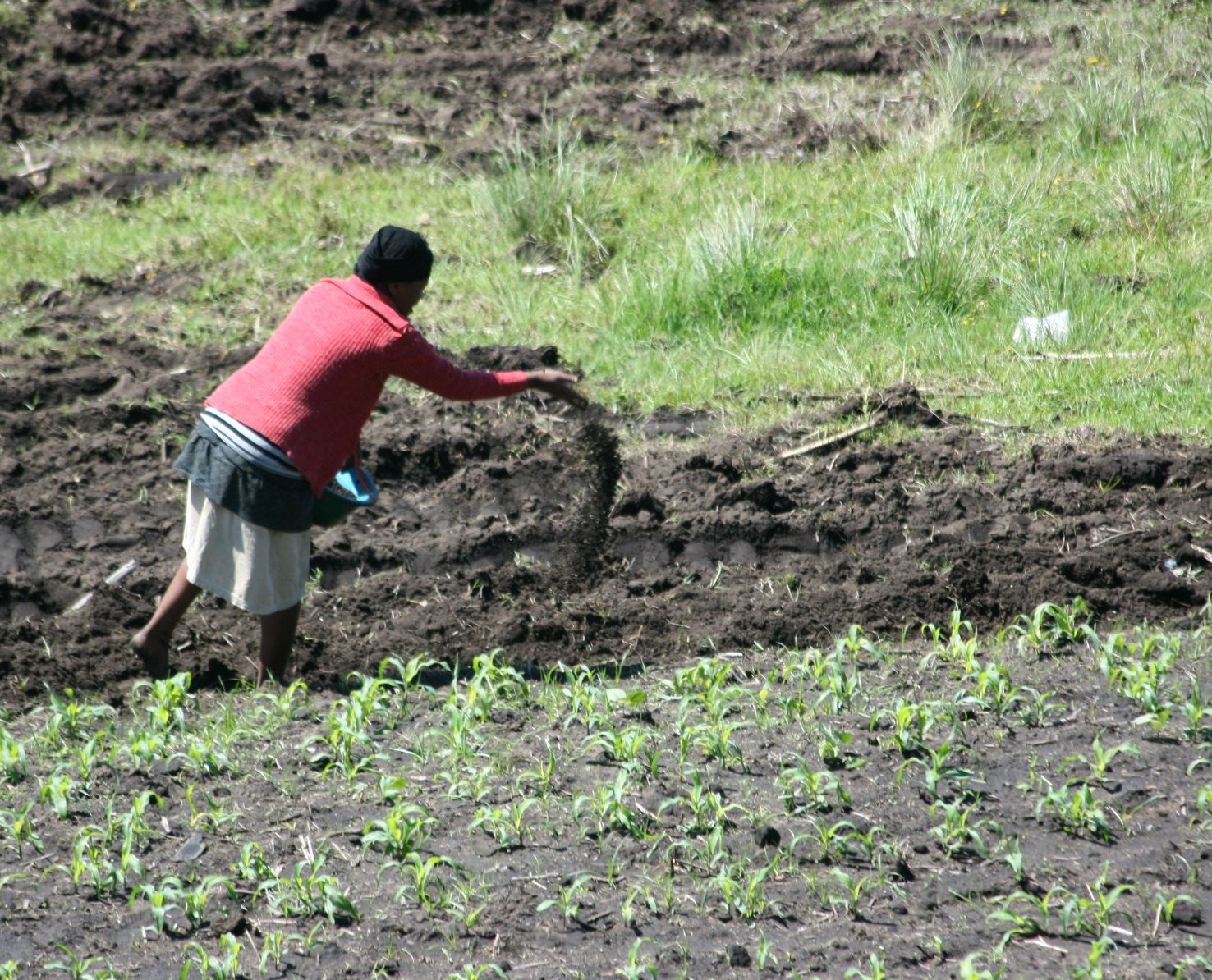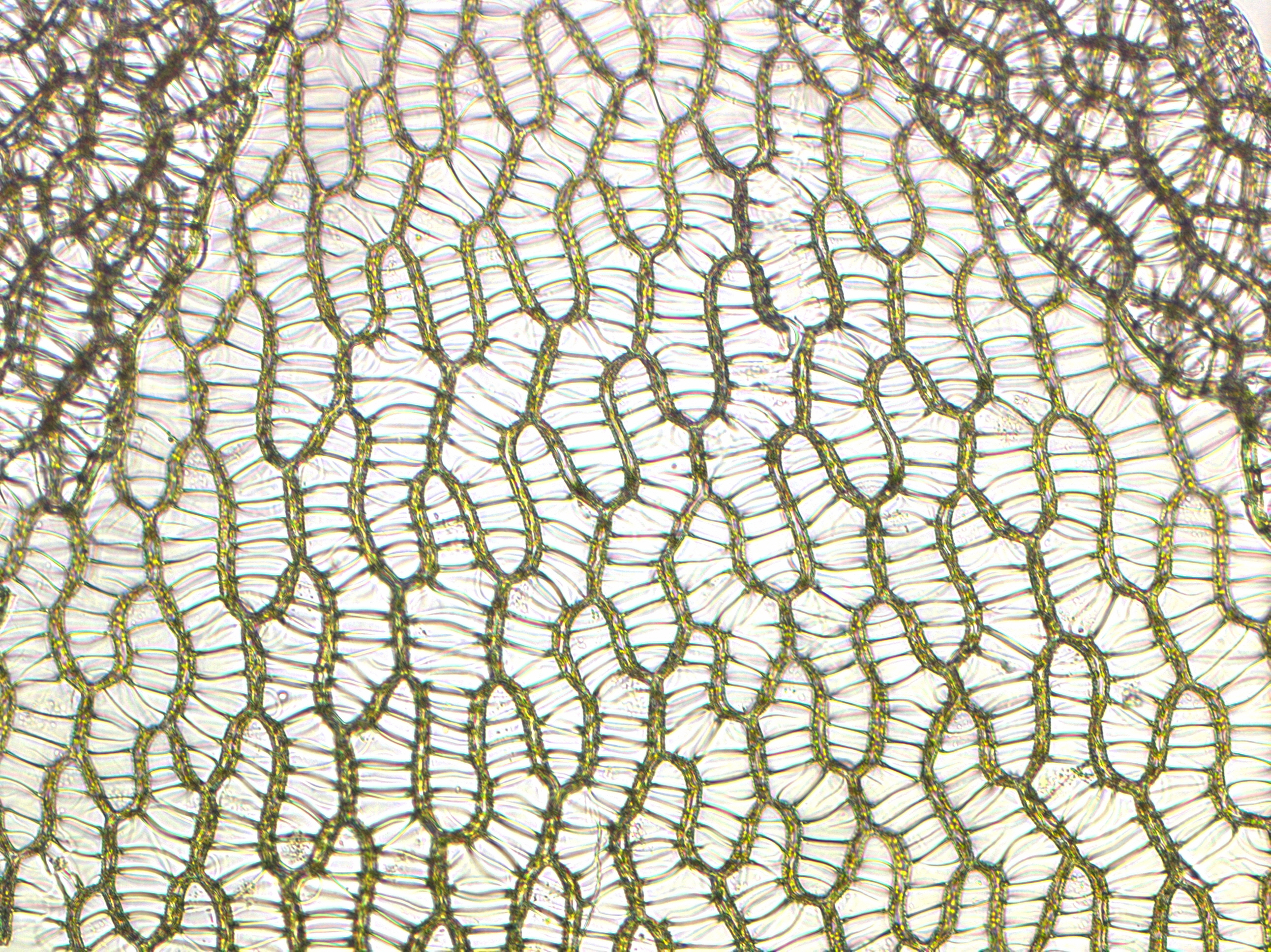|
Rhipsalis Pilocarpa
''Rhipsalis pilocarpa'', the hairy-fruited wickerware cactus, is a species of flowering plant in the cactus family (botany), family that is endemic to Brazil. Scarce in the wild, it is known only in a small number of isolated locations. Its status is listed as “vulnerable” by the IUCN Red List. However, it is cultivated as an ornamental houseplant and as such has gained the Royal Horticultural Society’s Award of Garden Merit. Description In the wild ''Rhipsalis pilocarpa'' is an epiphyte, using a host tree for support but not parasitising or otherwise harming its host. Growing to tall and broad, its slim cylindrical stems are at first erect, becoming pendent with short straight branches arranged in whorls. The stems are crassulent, segmented and potentially dividing after each segment. It is one of the Rhipsalis in which the spines are still visible, especially on the young stems. It grows as a small epiphytic shrub with initially upright and later hanging shoots. The dir ... [...More Info...] [...Related Items...] OR: [Wikipedia] [Google] [Baidu] |
Species
In biology, a species is the basic unit of Taxonomy (biology), classification and a taxonomic rank of an organism, as well as a unit of biodiversity. A species is often defined as the largest group of organisms in which any two individuals of the appropriate sexes or mating types can reproduction, produce Fertility, fertile offspring, typically by sexual reproduction. Other ways of defining species include their karyotype, DNA sequence, morphology (biology), morphology, behaviour or ecological niche. In addition, paleontologists use the concept of the chronospecies since fossil reproduction cannot be examined. The most recent rigorous estimate for the total number of species of eukaryotes is between 8 and 8.7 million. However, only about 14% of these had been described by 2011. All species (except viruses) are given a binomial nomenclature, two-part name, a "binomial". The first part of a binomial is the genus to which the species belongs. The second part is called the specifi ... [...More Info...] [...Related Items...] OR: [Wikipedia] [Google] [Baidu] |
Curt Backeberg
Curt Backeberg (2 August 1894 in Lüneburg, Germany – 14 January 1966) was a German horticulturist especially known for the collection and classification of cacti. Biography He travelled extensively through Central and South America, and published a number of books on cacti, including the six-volume, 4,000-page ''Die Cactaceae'', 1958–1962, and the ''Kakteenlexikon'', first appearing in 1966 and updated posthumously. Although he collected and described many new species and defined a number of new genera, much of his work was based on faulty assumptions about the evolution of cacti and was too focused on geographic distribution; many of his genera have since been reorganized or abandoned. The botanist David Hunt is quoted as saying that he "left a trail of nomenclatural chaos that will probably vex cactus taxonomists for centuries.", p. 98 Nevertheless, his observations regarding the subtle variations among cacti have proven useful for hobbyists, who continue to use many cac ... [...More Info...] [...Related Items...] OR: [Wikipedia] [Google] [Baidu] |
Endemic Flora Of Brazil
Endemism is the state of a species being found in a single defined geographic location, such as an island, state, nation, country or other defined zone; organisms that are indigenous to a place are not endemic to it if they are also found elsewhere. For example, the Cape sugarbird is found exclusively in southwestern South Africa and is therefore said to be ''endemic'' to that particular part of the world. An endemic species can be also be referred to as an ''endemism'' or in scientific literature as an ''endemite''. For example ''Cytisus aeolicus'' is an endemite of the Italian flora. ''Adzharia renschi'' was once believed to be an endemite of the Caucasus, but it was later discovered to be a non-indigenous species from South America belonging to a different genus. The extreme opposite of an endemic species is one with a cosmopolitan distribution, having a global or widespread range. A rare alternative term for a species that is endemic is "precinctive", which applies to s ... [...More Info...] [...Related Items...] OR: [Wikipedia] [Google] [Baidu] |
Rhipsalis
''Rhipsalis'' is a genus of epiphytic flowering plants in the cactus family, typically known as mistletoe cacti. They are found in parts of Central America, the Caribbean and northern regions of South America. They also inhabit isolated locations in Africa and Asia, and are the only cactus group naturally occurring in the Old World. This is the largest and most widely distributed genus of epiphytic cacti (those which live on other plants without damaging them). The scientific name ''Rhipsalis'' derives from the Ancient Greek term for wickerwork, referring to the plants' morphology. History The genus was described by Joseph Gaertner in 1788. But when he described the plant, he had in fact not realised it was a cactus. Instead, he assumed he had found a new species of ''Cassytha'',The original spelling in publication is ''cassutha'', but this is presumably a typographical error. a parasitic laurel from a completely different plant family. Ecology and distribution ''Rhipsalis ... [...More Info...] [...Related Items...] OR: [Wikipedia] [Google] [Baidu] |
Deforestation
Deforestation or forest clearance is the removal of a forest or stand of trees from land that is then land conversion, converted to non-forest use. Deforestation can involve conversion of forest land to farms, ranches, or urban area, urban use. The most concentrated deforestation occurs in tropical rainforests. About 31% of Earth's land surface is covered by forests at present. This is one-third less than the forest cover before the expansion of agriculture, a half of that loss occurring in the last century. Between 15 million to 18 million hectares of forest, an area the size of Bangladesh, are destroyed every year. On average 2,400 trees are cut down each minute. The Food and Agriculture Organization, Food and Agriculture Organization of the United Nations defines deforestation as the conversion of forest to other land uses (regardless of whether it is human-induced). "Deforestation" and "forest area net change" are not the same: the latter is the sum of all forest losses ... [...More Info...] [...Related Items...] OR: [Wikipedia] [Google] [Baidu] |
Fertilizer
A fertilizer (American English) or fertiliser (British English; see spelling differences) is any material of natural or synthetic origin that is applied to soil or to plant tissues to supply plant nutrients. Fertilizers may be distinct from liming materials or other non-nutrient soil amendments. Many sources of fertilizer exist, both natural and industrially produced. For most modern agricultural practices, fertilization focuses on three main macro nutrients: nitrogen (N), phosphorus (P), and potassium (K) with occasional addition of supplements like rock flour for micronutrients. Farmers apply these fertilizers in a variety of ways: through dry or pelletized or liquid application processes, using large agricultural equipment or hand-tool methods. Historically fertilization came from natural or organic sources: compost, animal manure, human manure, harvested minerals, crop rotations and byproducts of human-nature industries (i.e. fish processing waste, or bloodmeal ... [...More Info...] [...Related Items...] OR: [Wikipedia] [Google] [Baidu] |
Bark (botany)
Bark is the outermost layers of stems and roots of woody plants. Plants with bark include trees, woody vines, and shrubs. Bark refers to all the tissues outside the vascular cambium and is a nontechnical term. It overlays the wood and consists of the inner bark and the outer bark. The inner bark, which in older stems is living tissue, includes the innermost layer of the periderm. The outer bark on older stems includes the dead tissue on the surface of the stems, along with parts of the outermost periderm and all the tissues on the outer side of the periderm. The outer bark on trees which lies external to the living periderm is also called the rhytidome. Products derived from bark include bark shingle siding and wall coverings, spices and other flavorings, tanbark for tannin, resin, latex, medicines, poisons, various hallucinogenic chemicals and cork. Bark has been used to make cloth, canoes, and ropes and used as a surface for paintings and map making. A number of ... [...More Info...] [...Related Items...] OR: [Wikipedia] [Google] [Baidu] |
Peat Moss
''Sphagnum'' is a genus of approximately 380 accepted species of mosses, commonly known as sphagnum moss, peat moss, also bog moss and quacker moss (although that term is also sometimes used for peat). Accumulations of ''Sphagnum'' can store water, since both living and dead plants can hold large quantities of water inside their cells; plants may hold 16 to 26 times as much water as their dry weight, depending on the species.Bold, H. C. 1967. Morphology of Plants. second ed. Harper and Row, New York. p. 225-229. The empty cells help retain water in drier conditions. As sphagnum moss grows, it can slowly spread into drier conditions, forming larger mires, both raised bogs and blanket bogs. Thus, sphagnum can influence the composition of such habitats, with some describing sphagnum as 'habitat manipulators'. These peat accumulations then provide habitat for a wide array of peatland plants, including sedges and ericaceous shrubs, as well as orchids and carnivorous plants.Keddy, P ... [...More Info...] [...Related Items...] OR: [Wikipedia] [Google] [Baidu] |
Edward F
Edward is an English given name. It is derived from the Anglo-Saxon name ''Ēadweard'', composed of the elements '' ēad'' "wealth, fortune; prosperous" and '' weard'' "guardian, protector”. History The name Edward was very popular in Anglo-Saxon England, but the rule of the Norman and Plantagenet dynasties had effectively ended its use amongst the upper classes. The popularity of the name was revived when Henry III named his firstborn son, the future Edward I, as part of his efforts to promote a cult around Edward the Confessor, for whom Henry had a deep admiration. Variant forms The name has been adopted in the Iberian peninsula since the 15th century, due to Edward, King of Portugal, whose mother was English. The Spanish/Portuguese forms of the name are Eduardo and Duarte (name), Duarte. Other variant forms include French Édouard, Italian Edoardo and Odoardo, German, Dutch, Czech and Romanian Eduard (name), Eduard and Scandinavian Edvard. Short forms include Ed, Edd ... [...More Info...] [...Related Items...] OR: [Wikipedia] [Google] [Baidu] |
Viviparity
Among animals, viviparity is development of the embryo inside the body of the parent. This is opposed to oviparity which is a reproductive mode in which females lay developing eggs that complete their development and hatch externally from the mother. The term 'viviparity' and its adjective form 'viviparous' derive from the Latin ''vivus'' meaning "living" and ''pario'' meaning "give birth to". Reproductive mode Five modes of reproduction have been differentiated in animals based on relations between zygote and parents. The five include two nonviviparous modes: ovuliparity, with external fertilisation, and oviparity, with internal fertilisation. In the latter, the female lays zygotes as eggs with a large yolk; this occurs in all birds, most reptiles, and some fishes. These modes are distinguished from viviparity, which covers all the modes that result in live birth: *Histotrophic viviparity: the zygotes develop in the female's oviducts, but find their nutrients by oophagy ... [...More Info...] [...Related Items...] OR: [Wikipedia] [Google] [Baidu] |
Pericarp
Fruit anatomy is the plant anatomy of the internal structure of fruit. Fruits are the mature ovary or ovaries of one or more flowers. They are found in three main anatomical categories: aggregate fruits, multiple fruits, and simple fruits. Aggregate fruits are formed from a single compound flower and contain many ovaries or fruitlets. Examples include raspberries and blackberries. Multiple fruits are formed from the fused ovaries of multiple flowers or inflorescence. Examples include fig, mulberry, and pineapple. Simple fruits are formed from a single ovary and may contain one or many seeds. They can be either fleshy or dry. In fleshy fruit, during development, the pericarp (ovary wall) and other accessory structures become the fleshy portion of the fruit. The types of fleshy fruits are berries, pomes, and drupes. In some fruits, the edible portion is not derived from the ovary, but rather from the aril, such as the mangosteen or pomegranate, and the pineapple from whic ... [...More Info...] [...Related Items...] OR: [Wikipedia] [Google] [Baidu] |
Thorns, Spines, And Prickles
In plant morphology, thorns, spines, and prickles, and in general spinose structures (sometimes called ''spinose teeth'' or ''spinose apical processes''), are hard, rigid extensions or modifications of leaves, roots, stems or buds with sharp, stiff ends, and generally serve the same function: physically deterring animals from eating the plant material. Description In common language the terms are used more or less interchangeably, but in botanical terms, thorns are derived shoots (so that they may or may not be branched, they may or may not have leaves, and they may or may not arise from a bud),Simpson, M. G. 2010. "Plant Morphology". In: ''Plant Systematics, 2nd. edition''. Elsevier Academic Press. Chapter 9.Judd, Campbell, Kellogg, Stevens, Donoghue. 2007. "Structural and Biochemical Characters". In: ''Plant Systematics, a phylogenetic approach, third edition''. Chapter 4. spines are derived from leaves (either the entire leaf or some part of the leaf that has vascular bundl ... [...More Info...] [...Related Items...] OR: [Wikipedia] [Google] [Baidu] |


.jpg)






